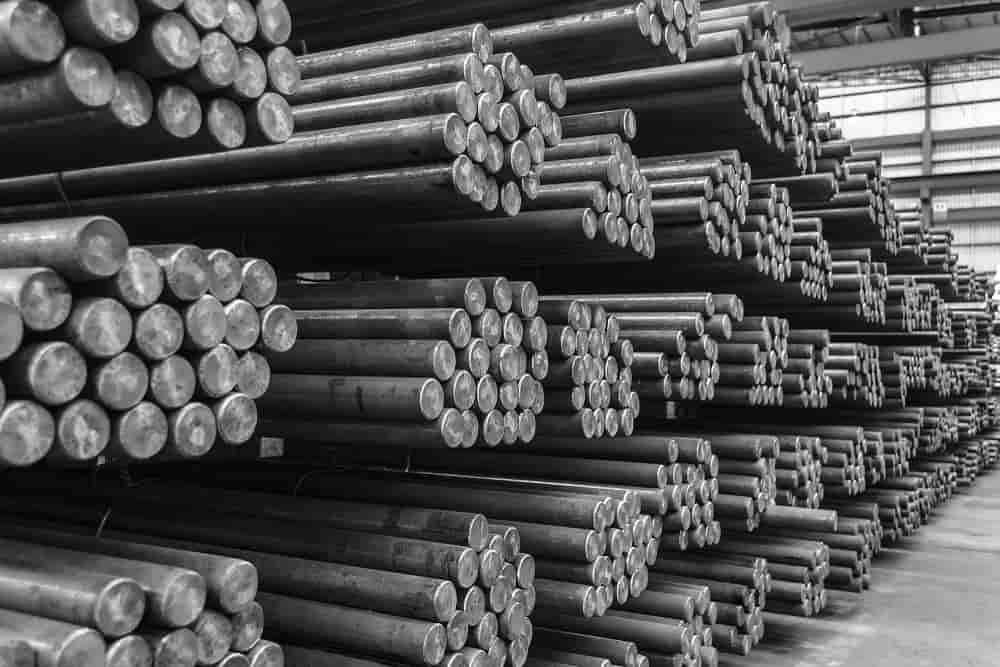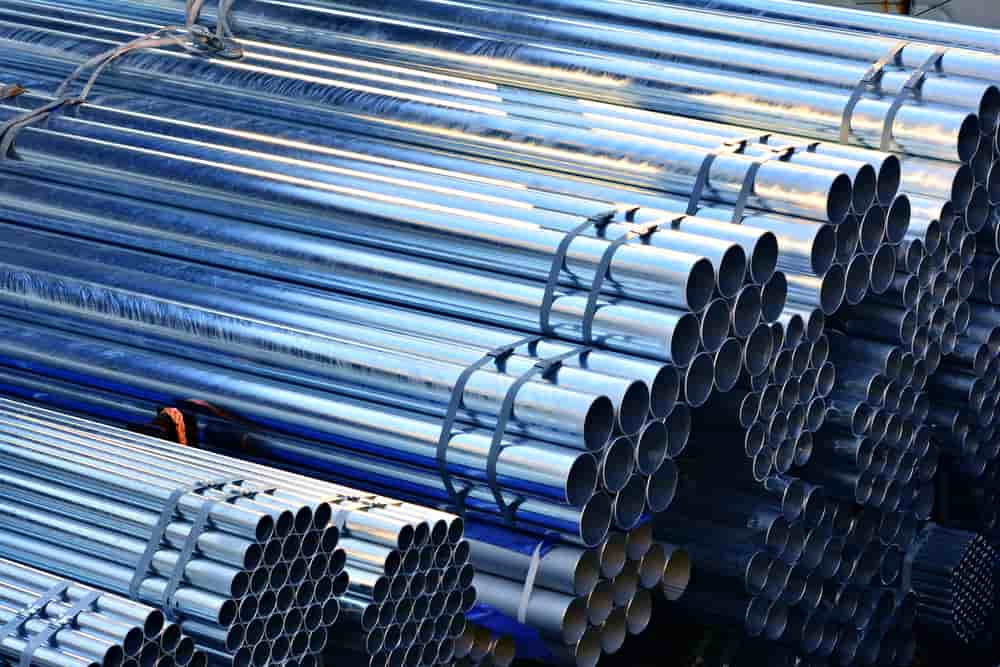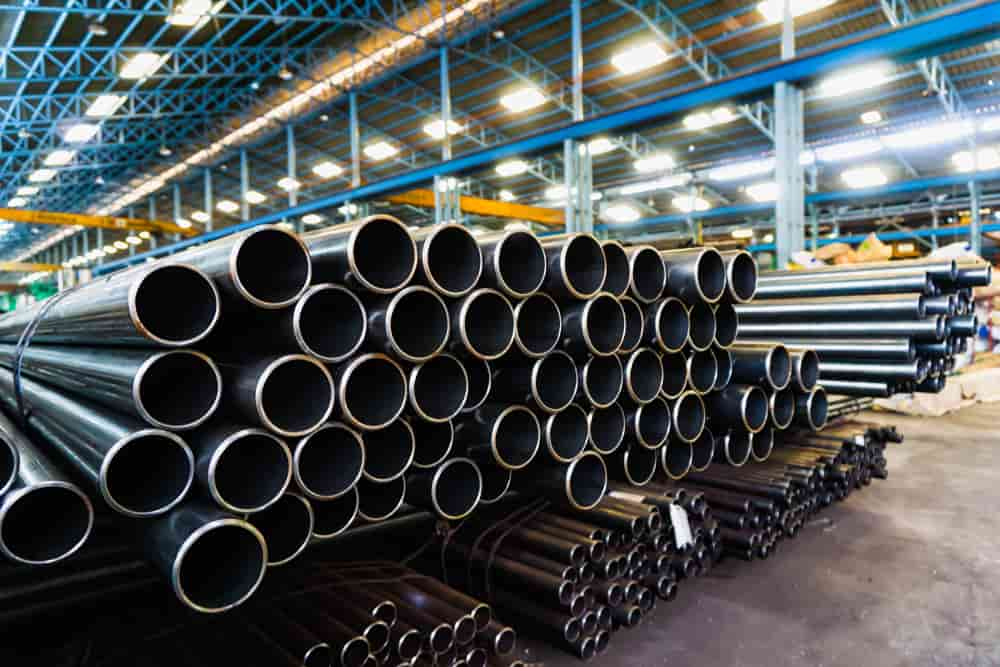The steel business is consistently ranked as one of the major sectors worldwide. Iron is the primary component that is combined with a variety of other metals and non-metallic elements to produce steel.
The primary difference between carbon steel and alloy steel is that carbon steel has only trace amounts of other elements besides iron and carbon, whereas alloy steel contains substantial concentrations of these other components.
Iron is combined with many additional elements during the manufacturing process of steel in order to get the desired range of qualities. Two forms of steel, alloy steel, and carbon steel, can be distinguished from one another based on the composition of their respective structures.

Principal Topics Addressed
- What Is Alloy Steel, Including Its Definition, Properties, and Applications
- What Is Carbon Steel? Including Its Definition, Properties, and Applications
- A Comparison of the Key Differences Between Alloy Steel and Carbon Steel What Is the Difference Between Alloy Steel and Carbon Steel?
The Definition of Alloy Steel
Compounds made of metal are known as alloys. At the very least, a single metal component is required for an alloy to be considered one.
When compared to the properties of the individual elements that go into making an alloy, those attributes of the alloy are significantly improved. Mixing different elements together in varying proportions results in the formation of certain traits. Therefore, the qualities that are needed can be accomplished by combining a variety of metals and elements in varying proportions.
It’s possible for alloys to be either homogeneous or heterogeneous. Because of the existence of the metal component, almost all alloys have a reflective quality to them. Because they contain at least one component that is made of metal, alloys also have the ability to conduct electricity.
Iron, carbon, and significant quantities of additional elements are the primary components of alloy steel. Manganese, silicon, nickel, titanium, copper, and chromium are some of the other elements that are frequently found in its composition.
These substances are known as alloy elements due to the fact that they are typically combined with one another to produce alloys. The qualities of the steel are going to be significantly improved as a result of the addition of these elements.
The following is a breakdown of alloy steel into its two distinct categories:
Low-Alloy Steel (LAIS)
Super-High-Alloy Steel

The amount of alloy elements found in low alloy steels is relatively low, whereas the amount of alloy elements found in high alloy steels is rather high. In order to enhance the steel’s hardness and durability, alloying elements are typically included in the production process.
The presence of significant amounts of additional elements, such as chromium, lends alloy steel its resistance to corrosion. Alloy steel can also be heat-treated to increase its strength.
As an illustration, stainless steel is an example of an alloy steel. In addition to iron and carbon, it also has a proportion of chromium that is around ten percent of the total. Kitchenware is typically made of stainless steel because of the material’s resistance to corrosion when used in food preparation.
What exactly is a composite, then?
A composite, on the other hand, is a blend of two or more elements, but it does not include any components made of metal. Composites, in contrast to alloys, are invariably composed of heterogeneous components.
The vast majority of composites may be found in their natural environments, although others can be manufactured. The components that go into the creation of composites might have very varied physical characteristics from one another. Concrete is an example of a synthetic composite, while wood is an example of a natural composite.
What exactly is stainless steel used for?
One variety of steel is known as stainless steel. As a consequence of this, it is also a metal alloy. Chromium and iron are both present in this compound.
In contrast to the amount of carbon that is present in normal steel, the amount of chromium that is present in stainless steel is around 30%. There is a possibility that stainless steel contains trace amounts of other metals, including copper, molybdenum, and titanium.
The ability of stainless steel to resist corrosion is the quality that is sought after the most. It is not susceptible to corrosion, hence there is no evidence of rusting, in contrast to regular steel.
Because of this quality, it is safe to be used in wet conditions, which makes it valuable in the creation of items for use in the kitchen as well as in healthcare.
It is particularly resistant to high temperatures, making it an ideal material for the manufacture of things used in the kitchen. The appearance of stainless steel is far more appealing than that of regular steel. The following is a breakdown of the sub-groups that stainless steel falls into according to the qualities that differentiate them.
Stainless steel with a duplex structure
A stainless steel that is martensitic
A stainless steel that is ferritic
Stainless steel with an austenitic structure

Carbon steel components
Iron and carbon are the two primary components of carbon steel. Trace amounts of the elements that make up the alloy are present. Silicon, manganese, sulfur, and phosphorous are all examples of these types of elements. In addition, carbon steel can be separated into the two groups shown below.
Steel with High Carbon Content
Low Carbon Steel
Carbon steel has features such as hardness, less ductility, less weldability, and a lower melting temperature than other types of steel because of the significant quantity of carbon that is contained inside it. The range of carbon content in mild steel is approximately 0.05% to 0.25%.
Mild steel is a form of low carbon steel. Its high iron content makes it corrosive in situations with high levels of humidity.
Steels with a high carbon content typically have between 0.6% and 1.0% carbon by weight. These high carbon steels have exceptional tensile strength. As a result, carbon steels are frequently utilized in the construction industry.

The definition of mild steel
The most common variety of carbon steel is known as mild steel, and it has a relatively little quantity of carbon overall. Manganese, silicon, and even minute levels of phosphorous have been found in some examples of mild steel. By preventing dislocations inside the iron crystals, these extra elements preserve the integrity of the structure of the metal iron, hence protecting its integrity.
The amount of carbon added to steel functions as a hardening agent, and the strength of the steel is directly related to the amount of carbon added; in general, the strength of steel increases as more carbon is added.
Mild steel is the most common type of steel, and in the United States alone, it is utilized in the production of 85 percent of all steel goods. Because it possesses desired features such as ductility, strength, and an economical price, it has grown in popularity as a type of iron in recent years. Wires, steel sheets, and even several other kinds of construction materials are frequently made out of mild steel.
Definition of the Variables That Determine the Difference between Alloy Steel and Carbon Steel
Alloy Steel: The term “alloy steel” refers to a specific form of steel that contains a significant amount of additional elements in addition to iron and carbon.
Carbon Steel is a Form of Steel That Has A High Amount Of Carbon And Low Numbers Of Other Components Carbon steel is a type of steel that has a high amount of carbon and low amounts of other elements.
Corrosion Resistance
Steel Alloys: Steel alloys have a high resistance to corrosion.
What Does It Mean When Someone Says the Terms “Corrosion-Resistant Alloy” (CRA)?
An alloy that is resistant to corrosion is abbreviated as CRA and is made up of metals such as:

Steel with a chrome stainless finish
Cobalt
Nickel
Iron
Titanium
Molybdenum
These metals, when combined, have the potential to increase resistance to corrosion more than other components, such as carbon steel. Because this particular type of alloy provides dependable protection against corrosion, it eliminates the necessity for costly maintenance and repair work.
Many different types of businesses make extensive use of corrosion-resistant alloys, particularly those in the chemical processing sector. These alloys deliver dependable performance in a variety of industries including medicine, energy, the pharmaceutical industry, gas & oil, and others. The utilization of these alloys helps to promote:
Excellent resistance to corrosion attack
Resistance to stress corrosion cracking (also known as SCC)
Simple assembly and weldability requirements
In most cases, the step to implement CRA should be taken as early as the pre-engineering phase in order to ensure optimal results. For the most part, for instance, operations involving piping now make extensive use of these alloys.
The production technology and metallurgy that allow corrosion-resistant alloys to be utilized in extremely corrosive environments, such as concentrations of hydrogen sulphine greater than 35%, temperatures reaching 220°C, and pressures approaching 22,000 PSI, have been developed and are continuing to be developed. These environments include:
For example, molybdenum alloys, such as alloy 625, which consists of 9% molybdenum, are able to withstand extreme circumstances such as the presence of components such as free sulfur in a system that is described as having a sour composition. In addition, when paired with molybdenum and chloride, nickel is able to contribute significantly to the suppression of skin cancer.
When working with corrosion-resistant alloys, selecting the appropriate materials is of the utmost importance. The following are some of the considerations that should be made:
Variations in the alloy’s constituents
Conditions for the application of heat
Complex material mixture metallurgy
Mechanisms for deterioration

Bringing together several aspects
What exactly is a composite, then?
On the other hand, a composite is a mixture of two or more elements, but it does not contain any components formed of metal. In contrast to alloys, composites are invariably made up of components that do not come from the same element. Although certain composites can be made, the great majority of composites can be discovered in the natural contexts in which they occur.
It’s possible for the components that go into making composites to have quite different physical properties from one another than those of the finished product. Concrete is an example of a composite made from synthetic materials, whereas wood is an example of a composite made from natural materials.
It is likely that the procedure of choosing the suitable CRA for usage in industries such as transportation or production could end up being quite difficult to accomplish. In the event that this is not carried out in the appropriate manner, it is feasible that adverse outcomes may be produced. As a consequence of this, one should give serious consideration to all of the different difficulties.
Carbon Steel: In comparison to other kinds of steel, carbon steels have a significantly lower resistance to corrosion.
Strength when compared to carbon steel, the strength of alloy steel is noticeably lower. This is because alloy steel is made using a different manufacturing process.
Steel made of carbon has a reputation for being extremely durable.
The weldability of alloy steel is considered to be high.
Carbon Steel: Carbon steel has a poor capacity for being welded.

Melting Point
Alloy Steel: The melting points of alloy steels are relatively high.
Carbon Steel: Carbon steels have low melting points.
High Levels of Ductility Alloy Steel: Alloy steel has excellent levels of ductility.
Carbon Steel: Carbon steel has a poor ductility due to its composition.
Conclusion
There are a variety of different types of steel, each of which has its own unique elemental make-up. As a result, the primary criteria for classifying steels is the materials that make them up.
These two types of steel are known as alloy steel and carbon steel respectively. The primary distinction between carbon steel and alloy steel is that carbon steel has only trace amounts of other elements besides iron and carbon, whereas alloy steel contains substantial concentrations of these other components.











Your comment submitted.